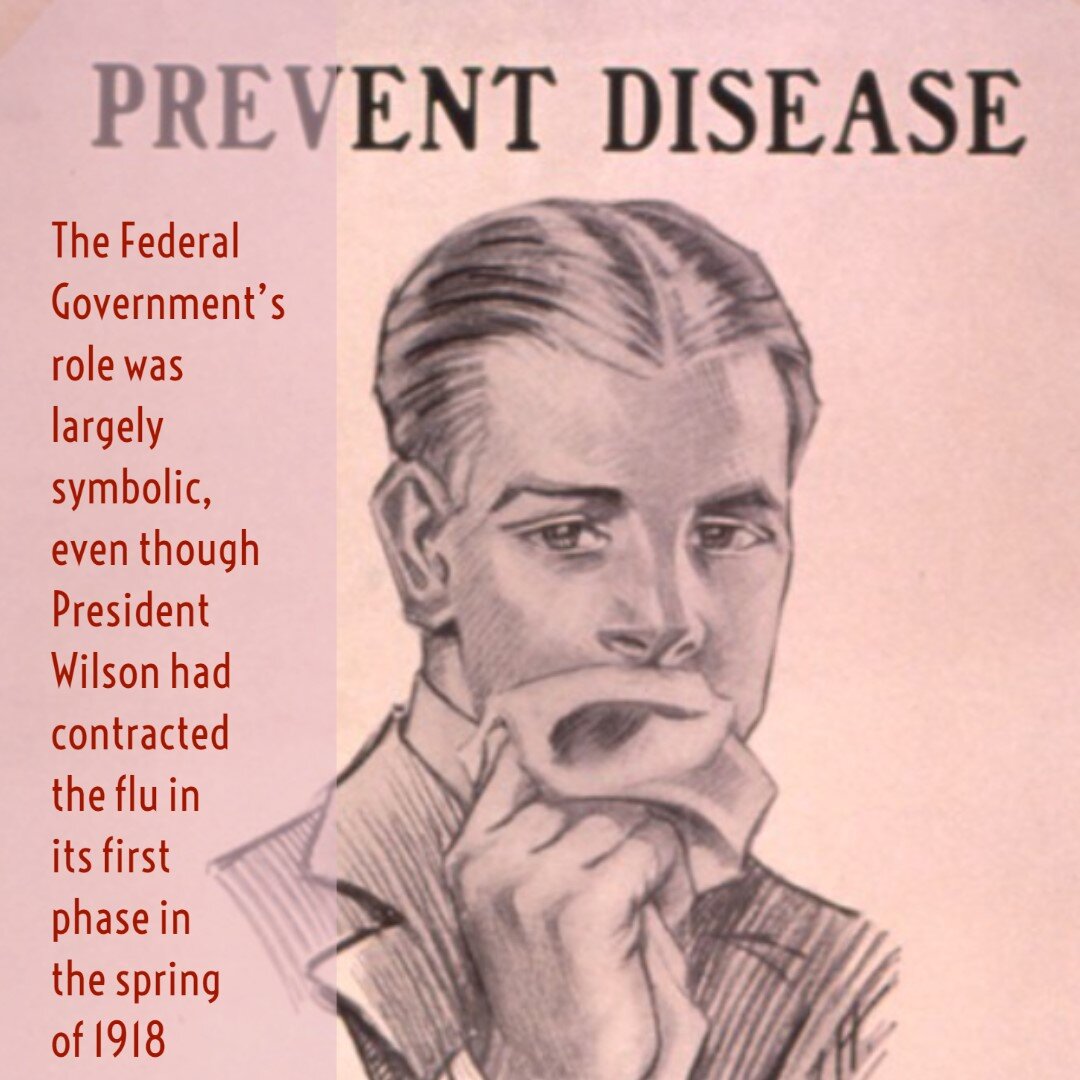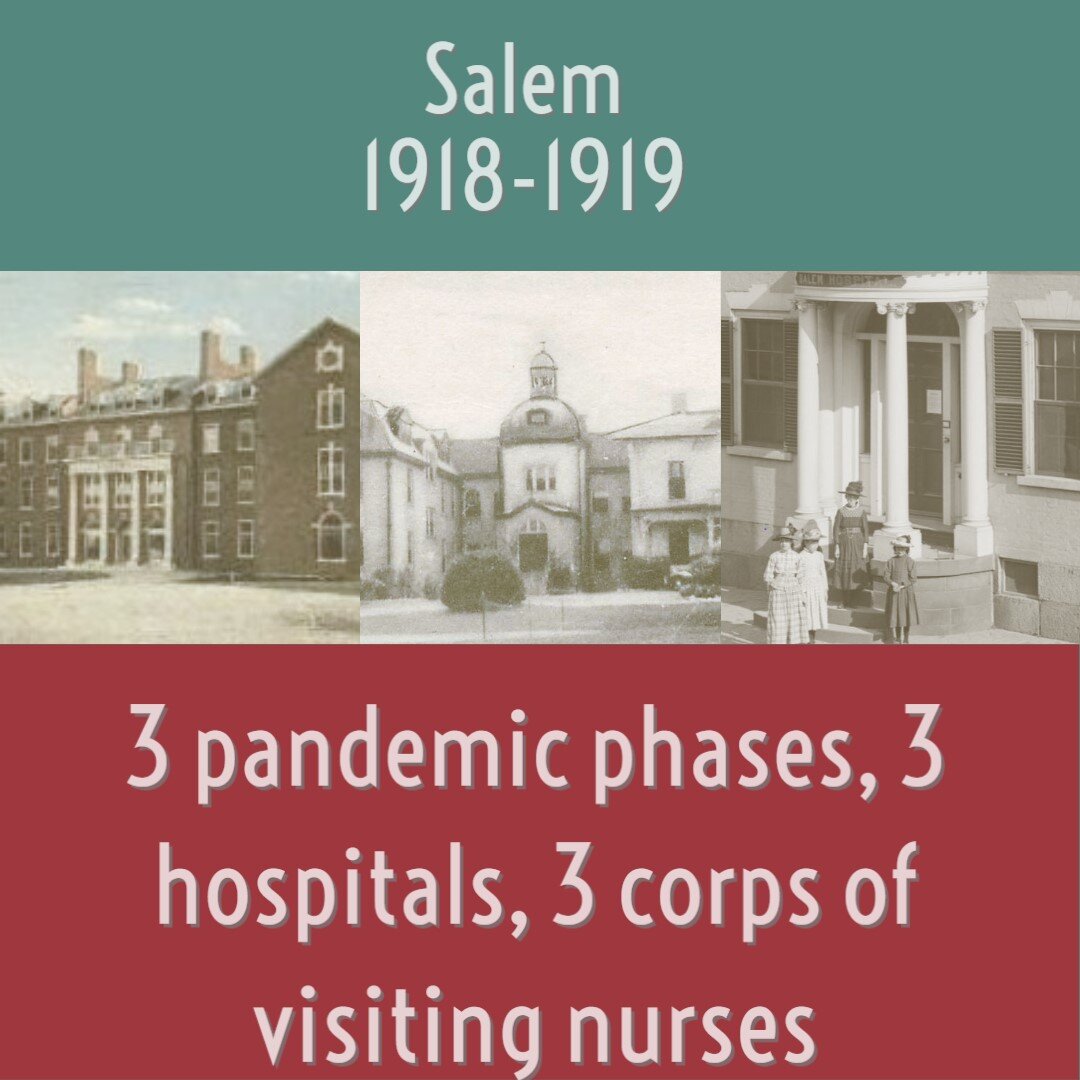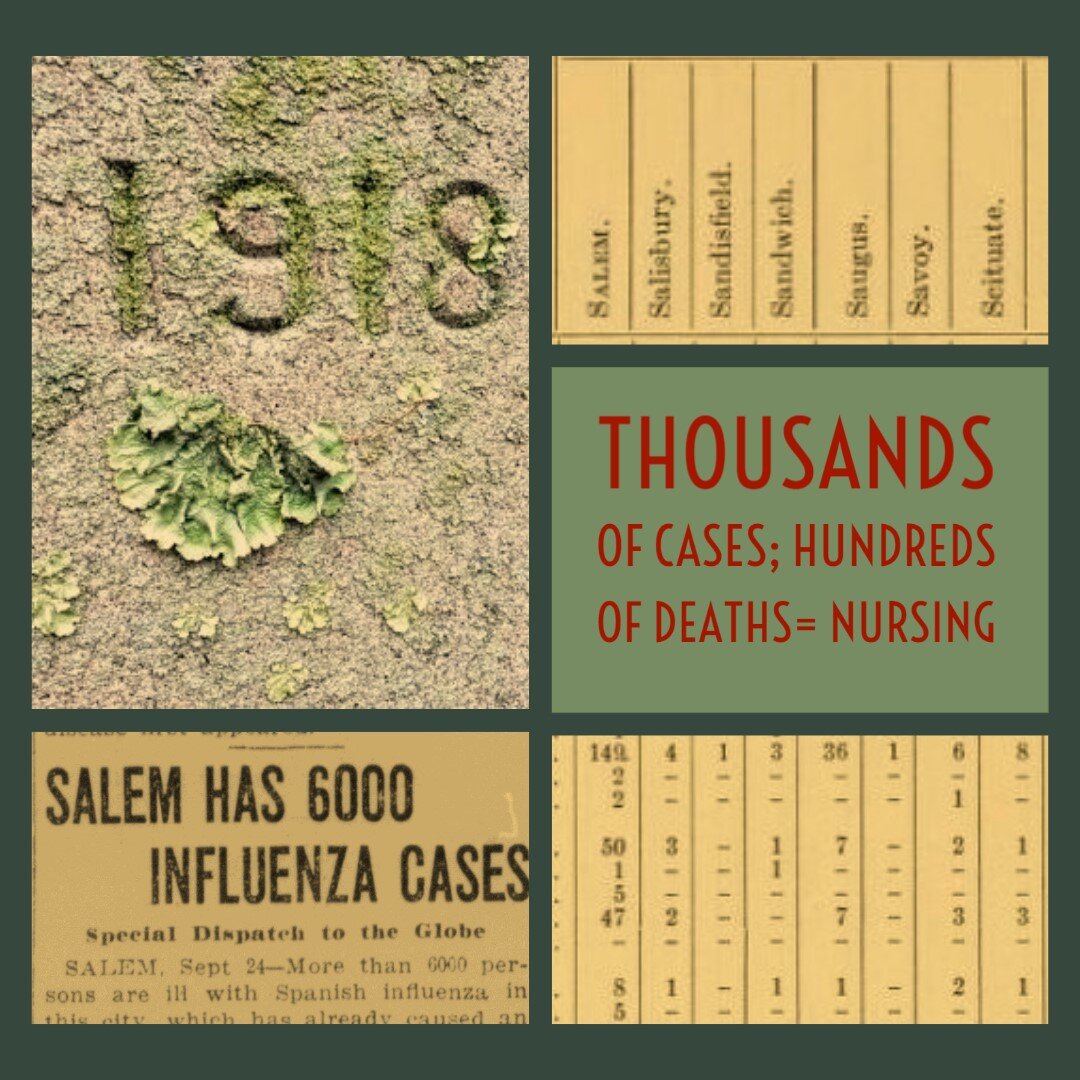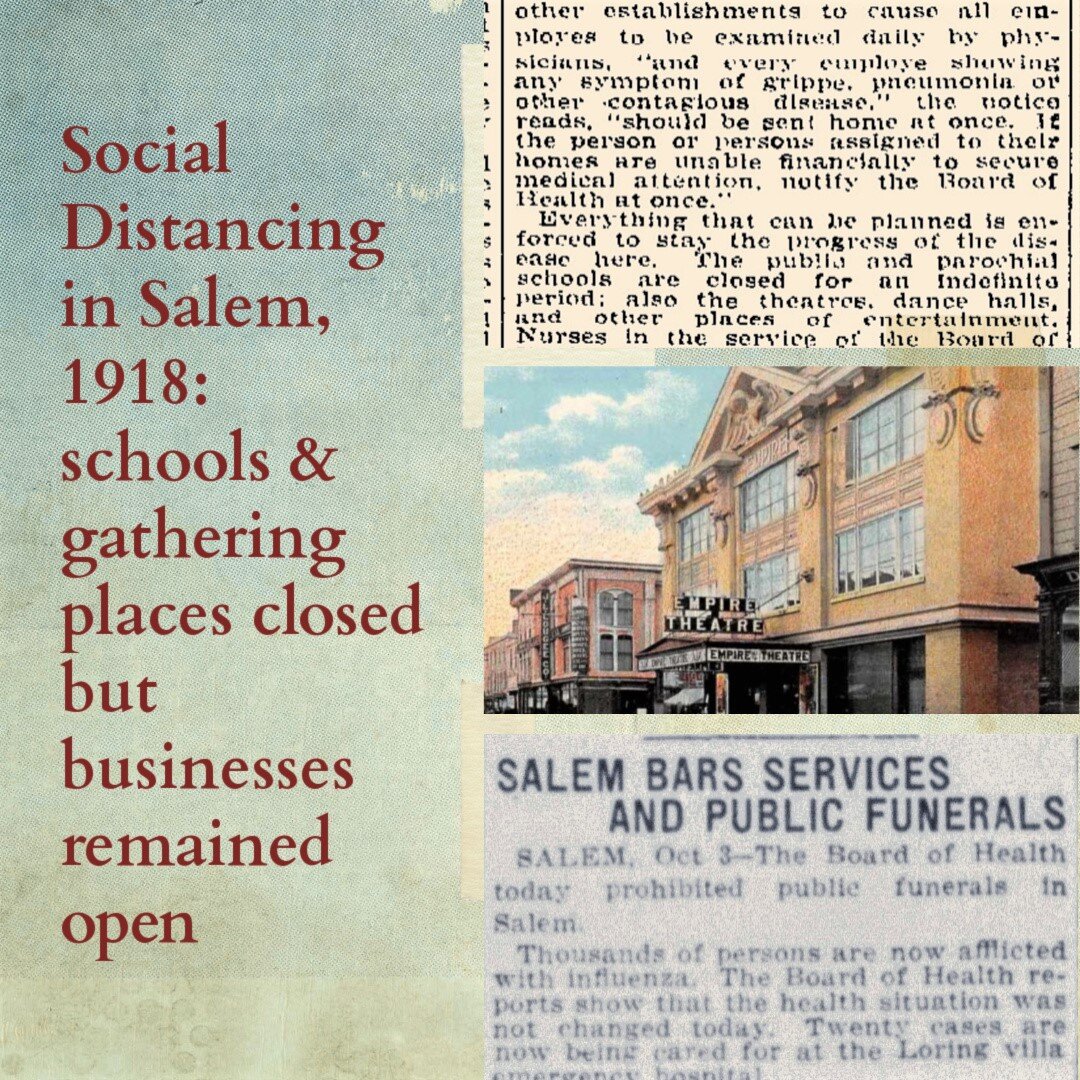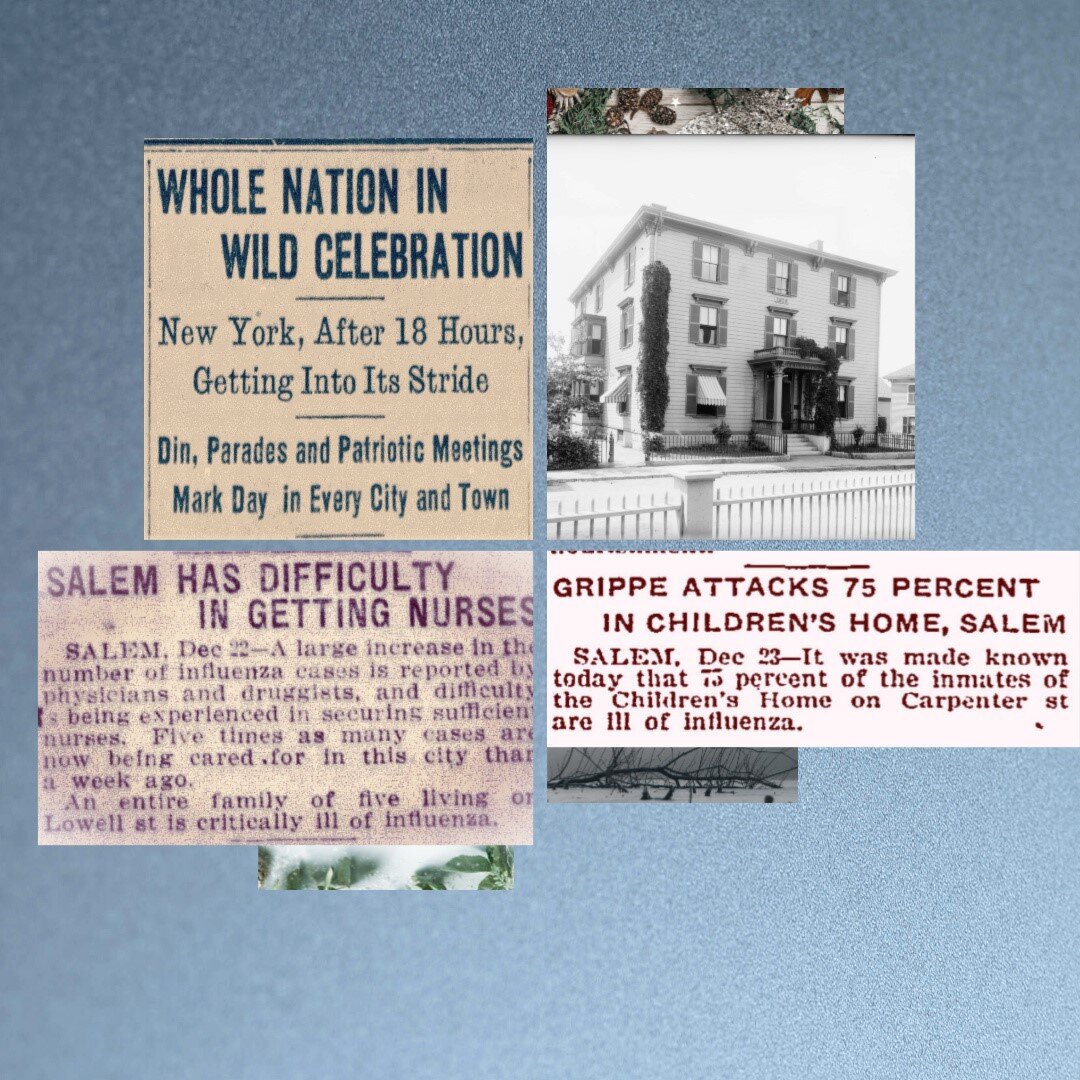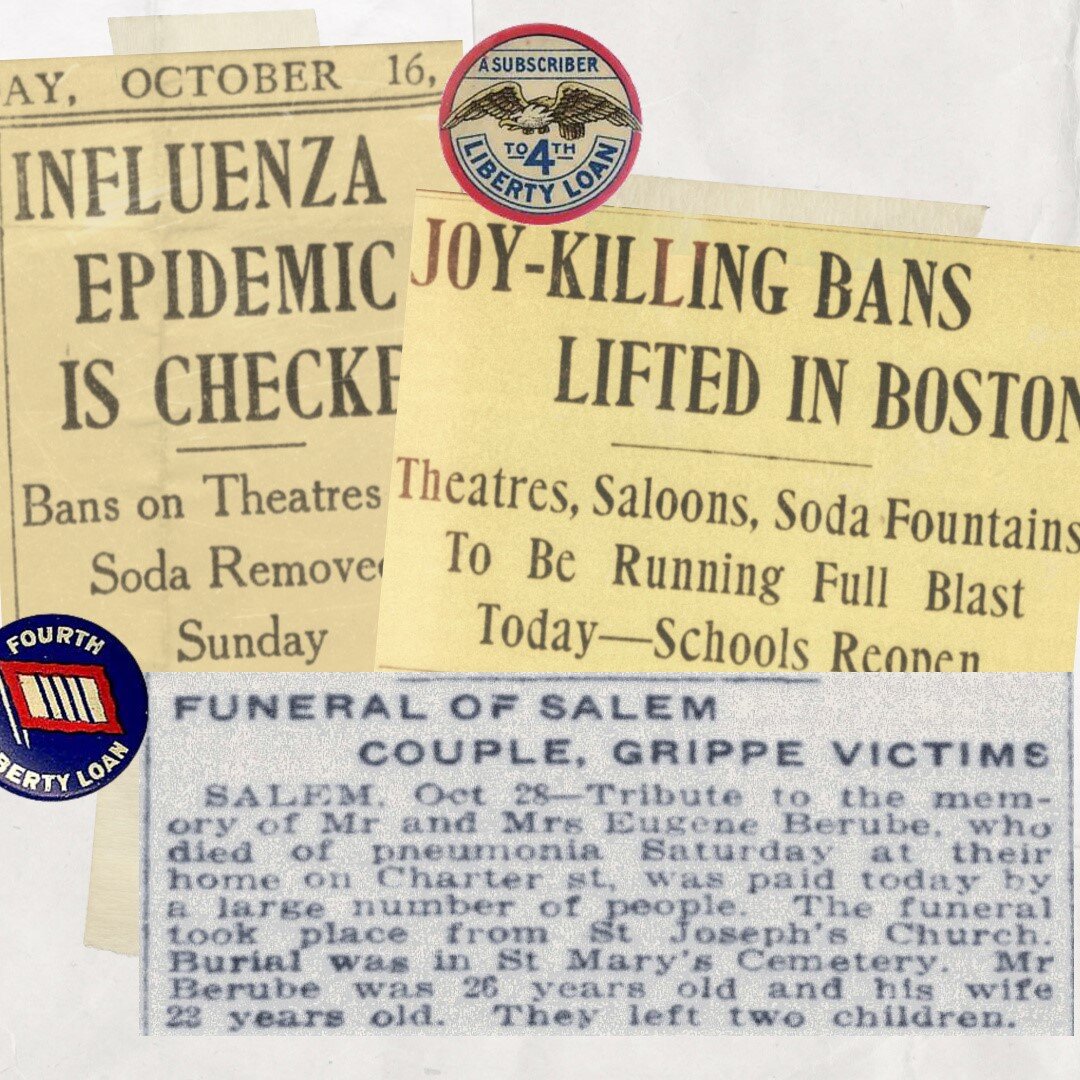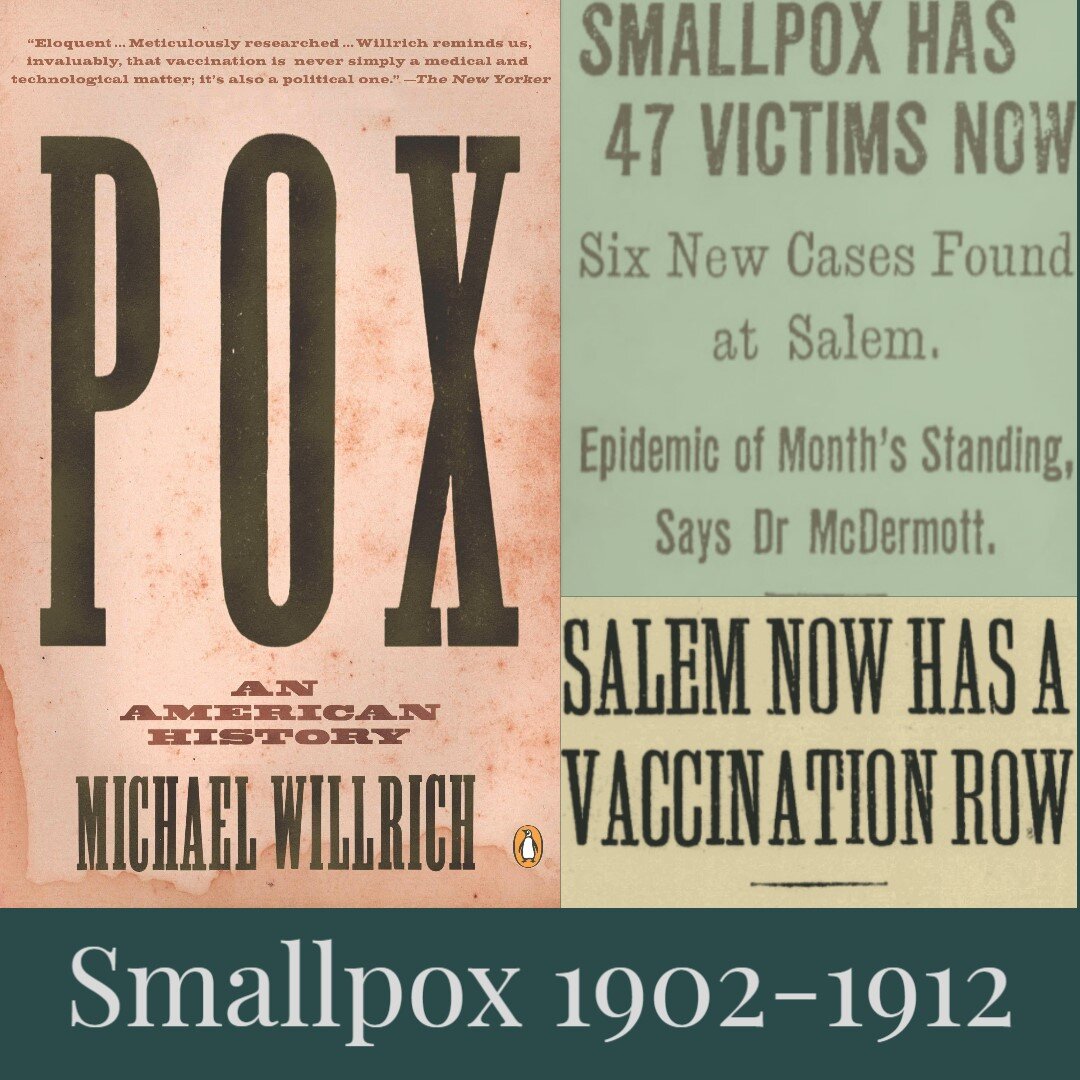The 1918 Flu & Other Epidemics
One hundred and two years ago, Salem experienced one of the most deadly global pandemics in modern history. The Spanish Flu, as it was called, began sickening Salem residents in the summer of 1918 and by the fall thousands were affected. Unlike the 1914 Salem Fire, which destroyed large sections of the city’s built environment, the Spanish Flu devastated Salem’s social fabric resulting in the loss of hundreds of lives. While personal stories and images from this period in the city’s history are not as easily accessible as those from the 1914 Fire, newspaper accounts from across the country in 1918 list precautions similar to today’s COVID-19: the call for social distancing, the requirement that all residents wear face masks, and the closure of all non-essential businesses and schools. By the time the flu passed at the end of 1918, thousands had died in Massachusetts, with more than half a million in the United States and millions impacted worldwide.
Today, reminders of the 1918 Influenza Epidemic in Salem include:
The former Ste. Chretienne Convent and School in South Salem. In 1918, the Sisters of St. Chretienne offered their building for use as an emergency influenza hospital, and themselves as nurses. For more information see articles in the sidebar.
The Edith and Robert Mahoney House at 39 Warren Street. Edith’s diaries in the Massachusetts Historical Society collection provide a glimpse of life in Salem during the Influenza Outbreak. Edith Coffin Colby (1882-1932) married Attorney Robert Muhlig Mahoney (1879-1924) in June 1906 and in 1916 they moved into their newly constructed house at 39 Warren Street, which had been built on the site of a house destroyed in the 1914 fire. Edith kept a diary of her life and in 1918 her entries described days of golf outings, picnics, shopping, and visits with friends. By mid-September 1918, however, her daily entries begin describing friends and relatives battling influenza, many of whom later succumbed to the illness. Her husband Robert also contracted the disease but recovered. Their daughter Elinor later married Salem and Boston architect Phillip Horton Smith, who was the son of a managing agent at the Naumkeag Steam Cotton Mills (Pequot Mills). Elinor and Phillip lived at 39 Warren Street in the 1930s, likely moving in after Edith’s death in 1932. In addition to restoration designs for Old Town Hall, Phillip also designed iconic Salem landmarks such as the Common Bandstand, the Hawthorne Hotel and the U.S. Post Office.
Grindal Square at the corner of Pickman and Pleasant Streets near the Common. This square is named for Yeoman Leroy H. Grindal who served in the US Navy during World War I. Yeoman Grindal enlisted on March 14th, 1918 and was stationed at First Naval District Headquarters. He tragically died of the Spanish Flu in Salem on December 8th, 1918. He was the son of Herbert and Magdalina (Tembroke) Grindal and brother to Herbert of Boston.
North Shore Babies’ Hospital on Ropes Point
responding to Other Health Emergencies in Salem
The Spanish Flu was not the first epidemic to ravage Salem and it certainly was not the last. In 1905, Salem battled a cholera outbreak directly affecting babies and young children. To treat the outbreak, the Babies Summer Hospital Society started the North Shore Babies' Hospital on Baker's Island. In 1910, the hospital was relocated to the Estate of Charles A Ropes, a 13 room house at the end of Dearborn Street in North Salem. Originally only open in the summer, the hospital began operating year round in 1926. In the early 1960s, the hospital relocated again to a new building on Highland Avenue next to the Salem Hospital. In 1972, the Dearborn Street house was destroyed by a fire. For more information on the Children’s Hospital, see the sidebar for a 2009 Salem News article.
The original canvas tents of Camp Naumkeag
Salem’s Contagious Disease Hospital on Collins Cove treated many dangerous diseases affecting local residents. The hospital, which was located next to the city’s Almshouse on land that is now the Settlers Way Condos, treated patients with Scarlet Fever, Diphtheria and Tubercolosis. In 1910, a year that saw more than 150,000 perish from TB in the United States, the women-led Committee on the Prevention of Tuberculosis raised funds to create a summer camp specifically designed to treat TB patients. Camp Naumkeag, located on a bluff next to the Almshouse, originally housed patients in canvas tents before permanent structures were later built. For more information on the history of Camp Naumkeag, see articles in the sidebar.
For more stories about the 1918 Flu and other epidemics in salem:
#SalemTogether posts:
Camp Naumkeag as Salem Health Camp
The Death of Bradstreet Parker
SSU Archives - Ste. Chretienne
Previous Streets of Salem blogs:
Previous History by the Sea blogs:
Almshouse and Hospital for Contagious Diseases
The Salem News:
Other resources:
A Century Ago - the Spanish Flu918 Epidemic Ipswich Historical Society
What We Can Learn from 1918 Influenza Diaries
The Influenza Pandemic of 1918, Yankee Magazine
Then & Now: A History of Health, Salem Patch
100 Years After the Influenza Pandemic, Massachusetts Historical Society

